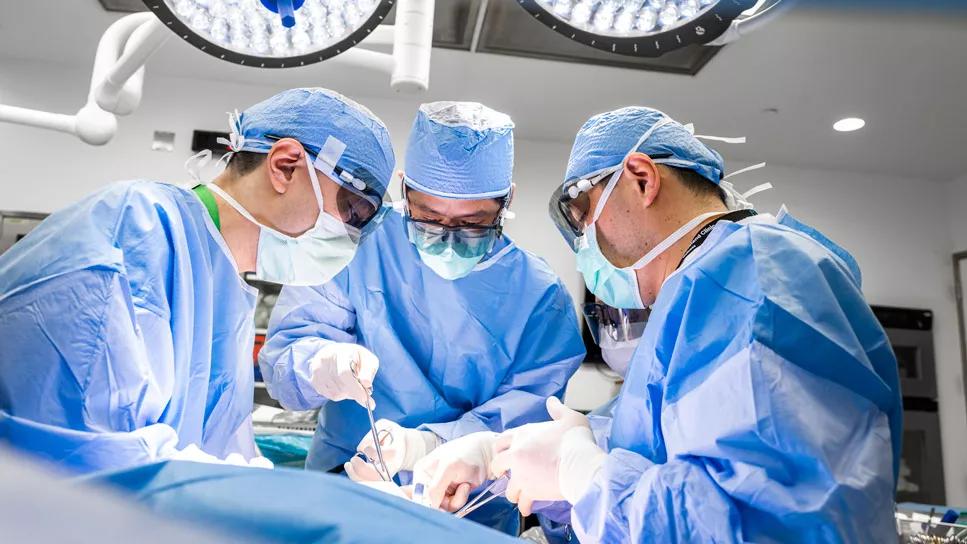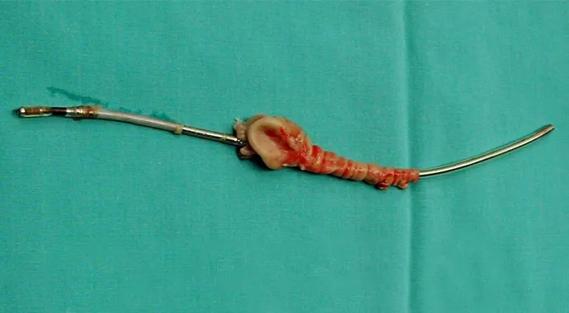New research indicates feasibility and helps identify which patients could benefit

Coronary artery disease (CAD) is estimated to occur in as many as 30% of patients with end-stage liver disease (ESLD), a rate much higher than the estimated 6% of the general public. However, heart failure before, during and after liver transplantation can be devastating and life-threatening. So, patients with multiple comorbidities may feel like they don’t have any options in terms of treatment.
Advertisement
Cleveland Clinic is a non-profit academic medical center. Advertising on our site helps support our mission. We do not endorse non-Cleveland Clinic products or services. Policy
“If a patient has serious heart problems, most liver transplant centers will tell them they need to fix the heart problems first before being considered for a liver transplant,” says Chase Wehrle, MD, a resident fellow in Cleveland Clinic’s Digestive Disease Institute. “That’s because the heart just can’t handle the kind of physiologic changes that happen during transplantation.”
“On the other hand,” adds Cleveland Clinic cardiothoracic surgeon Michael Tong, MD, “patients with end-stage liver cirrhosis cannot tolerate a heart operation, as their liver would not be able to handle the stress of heart surgery.”
“As a result,” Dr. Wehrle notes, “essentially these patients are told there’s nothing that can be done for them.”
However, new research from Cleveland Clinic appearing in Annals of Surgery indicates that combined liver transplant (LT) and cardiac surgery (CS) may be feasible in highly selected patients. To the authors’ knowledge, these findings represent the largest series describing combined single-stage CS+LT. This study also outlines several predictors of mortality and has created a four-variable CS+LT score to help better identify which patients could benefit from the approach.
The study included 31 patients who underwent combined CS+LT between 2005 and 2021. The primary outcome was five-year survival.
“We felt that longer-term outcomes were most important when evaluating these high-risk patients for a likely prolonged perioperative course, so we wanted to look beyond just a one-year survival outcome,” explains Koji Hashimoto MD, PhD, Director of Liver Transplantation at Cleveland Clinic and an author on the study.
Advertisement
“The selection process for these patients was fairly extensive,” says Dr. Wehrle, lead author of the study. “All patients with ESLD and cardiac dysfunction are reviewed independently by the cardiac surgery, cardiology, hepatology and liver transplant teams. Those patients are then reviewed weekly by a multi-disciplinary liver transplant selection committee, and all four of those teams are present for that discussion.
He continues, “Patients were generally excluded from combined surgery if they were considered either too well with respect to either disease or too poorly as to be deemed ‘too high-risk.’ However, as shown in the study, patients can do surprisingly well after combined surgery, despite being incredibly ill before the operation. Because the window of patients who would benefit from combined CS+LT surgery is so narrow, we also felt it was important to help clinicians better identify these patients.”
The authors employed a machine learning algorithm to develop a risk score that uses four variables to predict mortality. The model was able to determine whether a patient is high-risk — in whom mortality within five years is above 50% — or if they are low risk — in whom mortality is below 10%.
The final model demonstrated that renal dysfunction had a relative weighted impact of 3.2 versus coronary artery bypass grafting (1.7), age ≥ 60y (1.7) or non-alcoholic steatohepatitis (1.3). Elevated LT+CS risk score was associated with an increased five-year mortality after surgery (AUC=0.731, P = < .001). Conversely, the widely accepted Perioperative Risk of Mortality Calculator from the Society of Thoracic Surgeons was unable to successfully stratify patients according to 1- (P > .99) or 5-year (P = .695) survival rates.
Advertisement
The risk score involves four factors: age, indication for cardiac surgery, indication for liver surgery and renal dysfunction. Each variable is treated binarily as a yes/no, with a score of 1 assigned for yes and 0 for no. These scores are then multiplied by average designated weights, and the absolute value of the sum of the values is calculated. From this, the equation for the LT+CS score is:
LT+CS = | -3.16 x Renal Dysfunction + -1.68 x CABG + -1.36 x NASH-Cirrhosis + 1.68 x Age > 60 |
“This equation allows any clinician to see if their patient would be a good candidate for surgery,” explains Dr. Wehrle. “This research helps establish not only that CS+LT is a viable option for some patients, but we also have a new method of predicting risk in this kind of approach. Now there is a scientific, numeric way to help assess whether it is worth recommending such an extensive surgery for a patient.”
Looking ahead even further, Dr. Wehrle notes that new machine perfusion for donor organs in liver transplantation has the potential to change the game even further. He notes, “This study focused on patients prior to the advent of machine perfusion, but just with how that technology has completely changed both the outcomes and the logistics of transplantation, I think it can only benefit our patients further.”
In October 2023, Cleveland Clinic started using machine perfusion as the standard of care for donor liver preservation. Dr. Wehrle also notes, “This new technology is expected not only to improve outcomes but also to increase the opportunity for patients to receive complex LT+CS.”
Advertisement
Dr. Wehrle notes that when it comes to CS+LT surgery, communication is crucial to make LT+CS successful. When a donor liver becomes available and accepted, many parallel systems are set in motion. The ORs, the cardiac surgeon and surgery OR team, the liver transplant team and surgeon, and the ICU teams all have to get prepared to achieve the same goal.
“As soon as the donor team confirms that a donor liver is in good condition, the cardiac team starts open heart surgery before the donor liver arrives at Cleveland Clinic,” explains Dr. Wehrle. “While the cardiac surgery is in progress, the liver is being recovered from the donor, brought all the way back to Cleveland Clinic — sometimes hundreds of miles away. Once the cardiac team is finished with their surgery, the liver team immediately goes in to complete liver transplantation. Such an expedited process is vital because the donor liver loses viability as ischemic time goes on. It is critical to make all these processes go smoothly with frequent communication among the teams in order to keep ischemia time short and the donor liver healthy.”
He continues, “With the machine perfusion, we can slow things down and the cardiac team doesn’t have to rush in order to ensure the liver remains healthy until it can be transplanted. All of this in turn makes the process safer for everyone involved. Our combined team is very proud of making this high-risk procedure safer and more feasible. Our research and innovation make the impossible possible. I look forward to saving more lives among patients for whom many believe there is no hope.”
Advertisement
“By working together, we can succeed in helping the sickest of patients with the most complex liver and heart disease in cases when working separately would only result in failure,” adds cardiac surgeon Dr. Tong, a co-author on the current study. “This is the true essence of Cleveland Clinic‘s team-of-teams culture.”
In terms of next steps, Dr. Wehrle notes that the team is focused on three goals. First, the team would like to continue validating the risk score in additional sets of patients. They would also like to determine what the optimal protocolized approach should be for patients with cardiac disease and liver disease that is not bad enough to warrant combined surgery. Lastly, the findings from this research indicated renal dysfunction is one of the strongest negative predictive risk factors, but it is also one that can be intervened on.
“Age and renal dysfunction were the two biggest factors indicating negative risk,” says Dr. Wehrle. “We can’t make patients younger, and cirrhotic patients often develop kidney dysfunction in the late stage of liver diseases. So, we need to see how these patients could benefit from early referral to transplant specialists like us.”
Advertisement

Medical and surgical perspectives on current and emerging uses of ECMO and Impella

Launch of the tool promises to reshape quality assessment across the specialty

Lead dwell time and manufacturer emerge as independent predictors of success in registry study

The case for a thoughtful approach to CTO and minimally invasive options for CABG

How the tool could help physicians alter management in real time

Preoperative Impella 5.5 placement can provide a critical safety net for high-risk patients

Technique may lay groundwork for personalized decision-making in procedural intervention

Check out our latest volume and outcomes data in these key areas